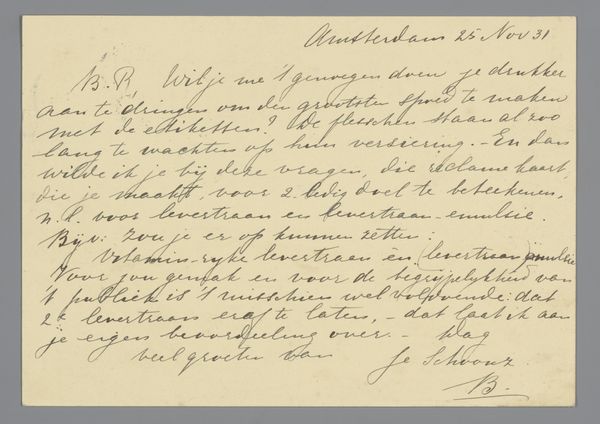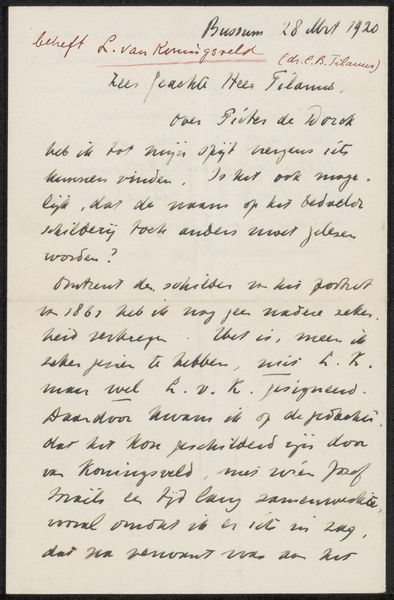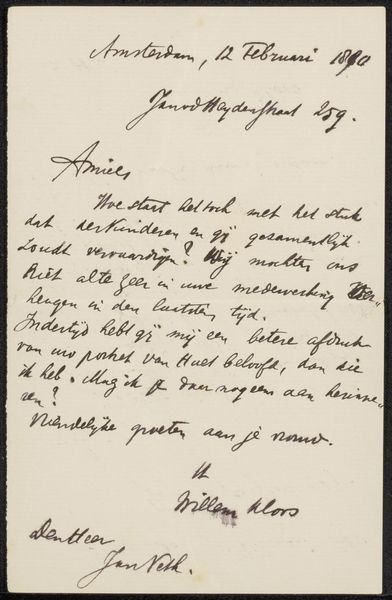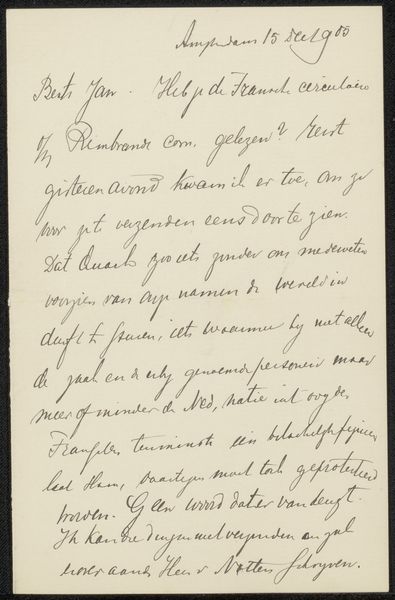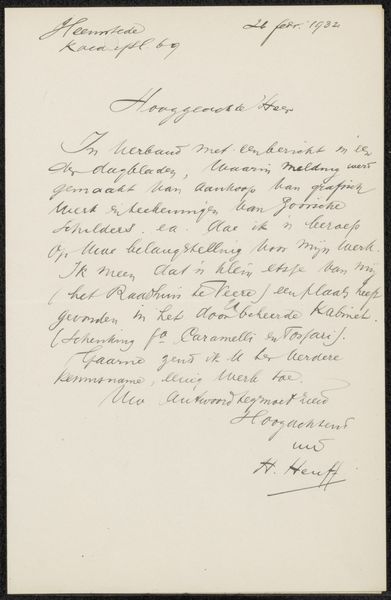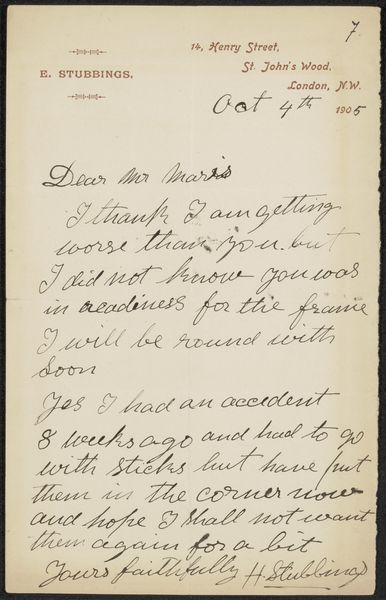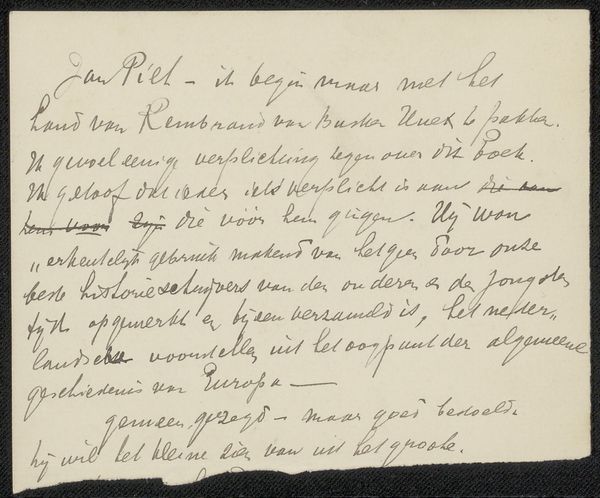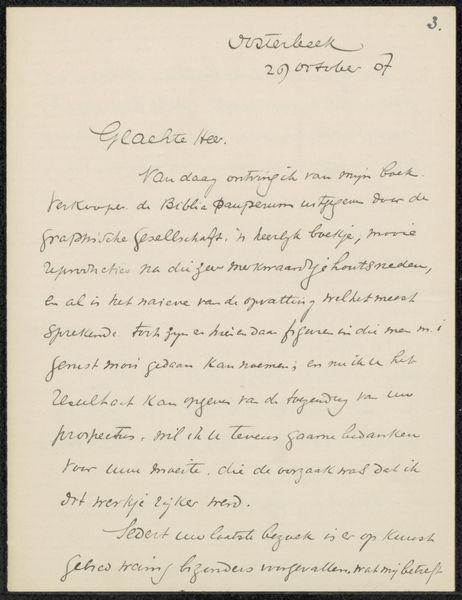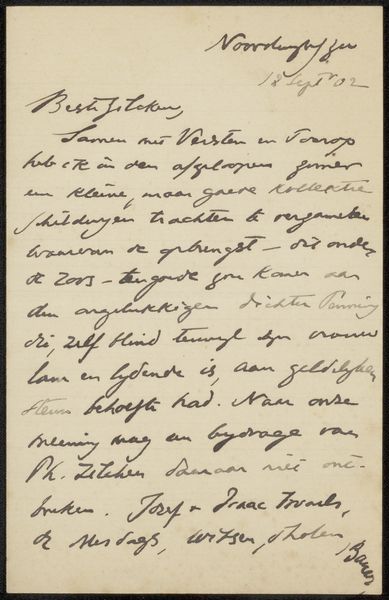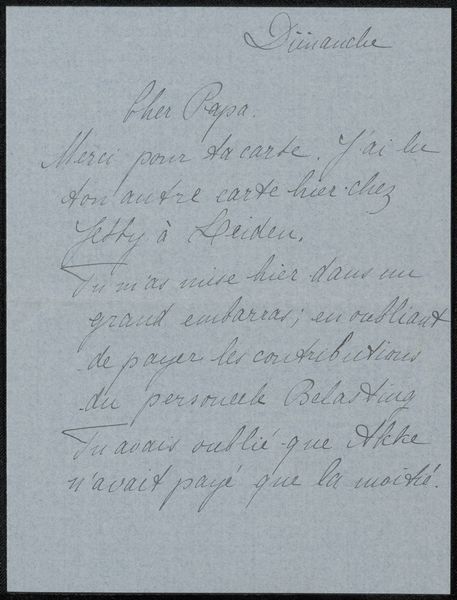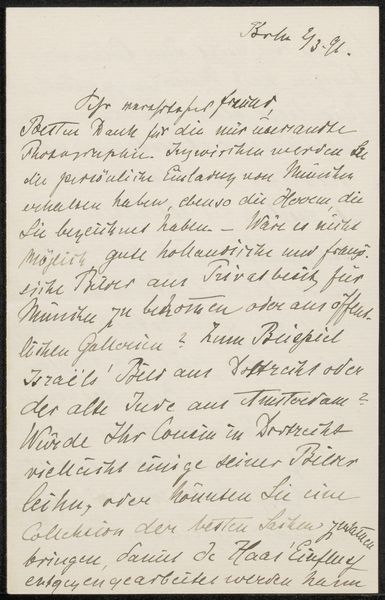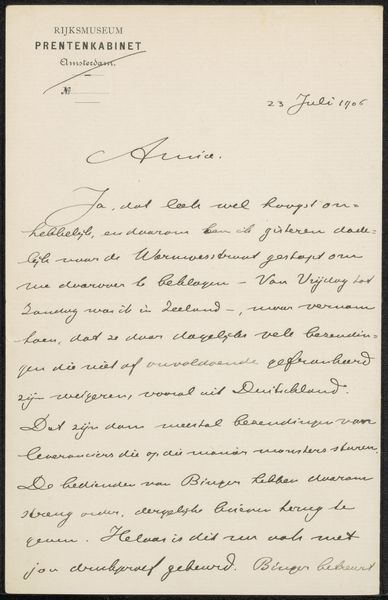
drawing, paper, ink
#
script typeface
#
drawing
#
script typography
#
hand-lettering
#
hand drawn type
#
hand lettering
#
paper
#
ink
#
hand-written
#
hand-drawn typeface
#
thick font
#
handwritten font
#
calligraphy
#
small lettering
Copyright: Rijks Museum: Open Domain
Curator: The work we're observing is entitled "Brief aan Philip Zilcken" - "Letter to Philip Zilcken". It's believed to originate from somewhere between 1913 and 1924, crafted by Abraham Seyne Kok. This piece is an ink drawing on paper. Editor: My first impression? It exudes a delicate, almost fragile air. The cursive script dances across the page; it feels intensely personal. Curator: The letter provides insight into artistic networks of the time. Zilcken was, himself, an artist, writer, and art critic—someone whose opinion would hold considerable sway. The context surrounding this communication becomes crucial. How might a word from Zilcken, a man of influence, help to validate or invalidate someone such as Kok? Editor: It’s interesting how handwriting, the character of script, reflects the period – almost like visual echo. Note, for example, how it stands apart from the blocky digital typography we use today. The act of writing became imbued with meaning… of intention. The care taken in creating this artwork really comes through. It's a humble, domestic version of propaganda! Curator: Propaganda in the sense that every artifact is involved in influencing our feelings or opinions? I agree entirely. And to delve further into these handwritten forms: observe the consistent slant, the carefully formed loops, the density of the ink…each element communicates refinement. Perhaps, even a yearning for acceptance by an esteemed colleague. Editor: Yes! Also, consider how a simple "letter" has become a gallery piece, viewed and interpreted in public. Letters used to represent private dialogue, often shared and intimate; now its vulnerability and candor is for public consumption. The socio-political dimensions have changed completely. Curator: Absolutely. A testament to how context can redefine the very nature of art and how, viewed differently, even everyday communication can take on significant symbolic weight. Editor: I’m left thinking about what has become public versus what should remain personal—the ethics, if you will. Curator: An excellent point to end on. This brief correspondence opens to up bigger conversations about what images have meant, what they mean now, and how society ascribes such meaning to images in the first place.
Comments
No comments
Be the first to comment and join the conversation on the ultimate creative platform.
